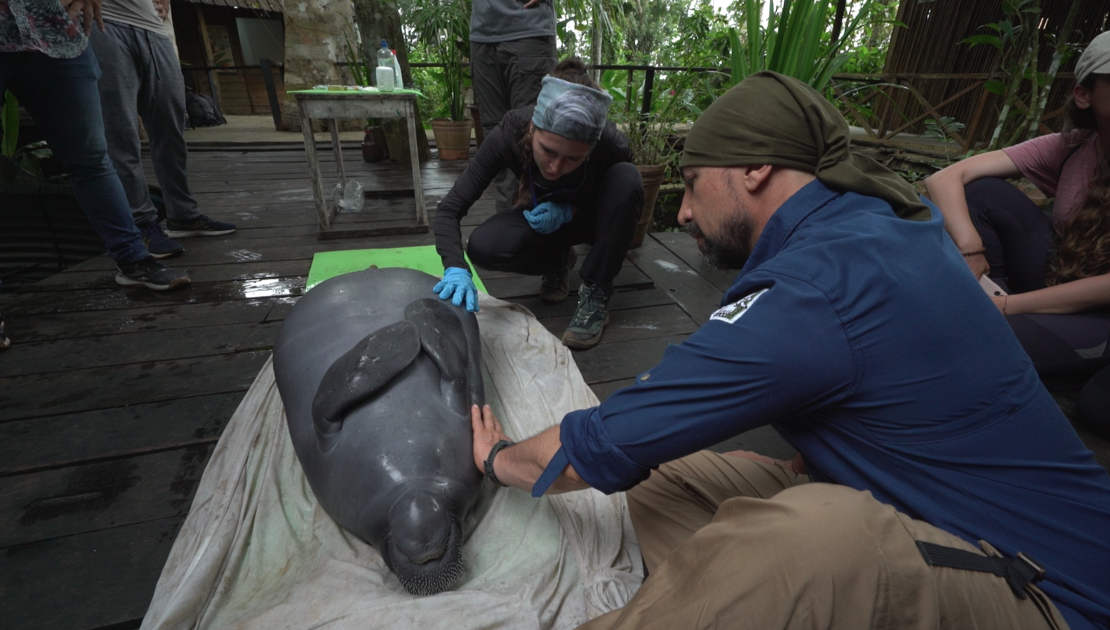Editor’s Note: Call to Earth is a CNN editorial series committed to reporting on the environmental challenges facing our planet, together with the solutions.?Rolex’s Perpetual Planet Initiative?has partnered with CNN to drive awareness and education around key sustainability issues and to inspire positive action.
Venturing deep into the complex waterways of the Amazon, Colombian marine biologist Fernando Trujillo first set out to study the mysterious pink river dolphin in 1987, at the directive of the late, renowned oceanographer Jacques Cousteau.
Trujillo met Cousteau at a university seminar in Bogotá. When Trujillo asked what he should focus his research on, Cousteau told him he should go study the river dolphins, which had not been investigated in depth. Two years later, Trujillo hitched a ride on a cargo plane to start his adventure in the Amazon.
Born and raised in Bogotá, Trujillo arrived in the riverside village of Puerto Nari?o as a recent graduate with “the arrogance of a university guy,” he recalled. He soon realized he’d need the help of the local Tikuna people in order to navigate the intricate terrain and get close to the dolphins.
“This is a very aggressive environment, very difficult to survive,” Trujillo told CNN of the Amazon. “The indigenous started to teach me – to show me the different species, how to paddle in a canoe, how to walk in the forest.”
He eventually forged a deep connection with the freshwater dolphins and their surroundings. He discovered that their populations were dwindling due to overfishing, habitat destruction, pollution and climate change.

There are two types of freshwater dolphins found throughout the Amazon: the Amazon River dolphin – or “pink dolphins” due to their color – and the smaller tucuxi, Trujillo said.
Both are predators, helping to keep fish populations in check. In 2018, the pink dolphins were classified as endangered by the International Union for Conservation of Nature, and two years later, so were the tucuxi.
“The first year I came here, in one year, I found 21 dead dolphins, so I knew I [had] to do something for those animals,” he said.
He decided to stay in the region and continue his work alongside the locals, who started calling him Omacha, which translates to “a dolphin that transforms into a man” in the Tikuna language.
“They told me ‘we all believe that you are a dolphin that became a human to protect the dolphins,’” Trujillo said. And in 1993, his moniker became the name of his conservation organization dedicated to protecting not only dolphins, but other endangered aquatic wildlife and their habitats across South America.

“I came here with a romantic approach to save the dolphins, but suddenly I realized that the dolphins are just a small piece of this huge ecosystem,” he said, “and in order to protect the dolphins, I needed to protect the rivers, the lakes and other species like manatees, caimans and also the people living here.”
Over the past 30 years, the award-winning scientist and his foundation have worked tirelessly to help foster dolphin-friendly fishing agreements, revitalize wetlands and help usher in the first-ever global declaration to protect river dolphins, in 2023.
Trujillo has helped train scientists across South America in dolphin surveying and conservation efforts, and he’s been on countless expeditions around the continent to assess other freshwater ecosystems and threats to biodiversity.
Everywhere he goes, Trujillo says that the dolphins have been vital in helping the team in their continued conservation efforts.
“The dolphins are a kind of thermometer, a sentinel of the health of the rivers,” he said.
Over the last few years, Omacha Foundation has tagged dolphins with satellite trackers to monitor their populations.
“We already have tagged more than 60 dolphins in South America and 27 just in Colombia,” he told CNN.
The GPS trackers have helped his team identify where the dolphins feed, mate and give birth, so that they can better protect those areas.

Trujillo is currently part of a two-year National Geographic and Rolex Perpetual Planet expedition, where he’s spearheading efforts aimed at preserving the dolphins and their ecosystems, while also supporting local indigenous communities.
“There are so many challenges to working in the Amazon, and sometimes we are not very optimistic but I think we can make a small difference,” he said.
Despite the difficulty, Trujillo said he will keep fighting to conserve this valuable ecosystem and its inhabitants.
“My dream is to protect the rivers, the aquatic ecosystems of the Amazon; I truly believe that the water is the future of this region and the planet.”








